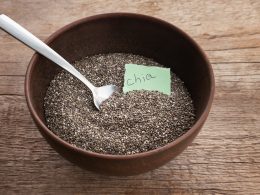Hungry Girl’s recipes are not only delicious but also designed to be nutritious and satisfying. Behind her culinary creations, there is a solid foundation of nutritional science. Let’s delve into the key scientific principles that contribute to the success of Hungry Girl’s recipes.
- Nutrient Density: Hungry Girl focuses on nutrient-dense ingredients in her recipes. Nutrient density refers to the concentration of essential nutrients relative to the calorie content of a food. By selecting ingredients rich in vitamins, minerals, fiber, and other beneficial compounds, her recipes provide a higher level of nutrition per calorie consumed. This ensures that you’re getting the most out of your meals in terms of essential nutrients.
- Balance of Macronutrients: Hungry Girl’s recipes typically incorporate a balanced combination of macronutrients, namely carbohydrates, proteins, and healthy fats. Each macronutrient plays a vital role in providing energy, supporting bodily functions, and promoting satiety. A balanced macronutrient profile helps to stabilize blood sugar levels, control hunger, and provide sustained energy throughout the day.
- Portion Control: Portion control is an essential aspect of Hungry Girl’s recipes. By carefully considering portion sizes, she helps individuals manage their calorie intake. Controlling portion sizes is critical for weight management and preventing overeating. Hungry Girl’s recipes often provide guidance on appropriate serving sizes, empowering individuals to make mindful choices about their food consumption.
- Flavor Enhancement: Hungry Girl understands that flavor plays a significant role in making healthy eating enjoyable and sustainable. Her recipes incorporate various herbs, spices, and low-calorie condiments to enhance taste without adding excessive calories. By utilizing flavor-boosting ingredients, Hungry Girl ensures that her recipes are both nutritious and delicious, making it easier to stick to a healthy eating plan.
- Ingredient Substitutions: Hungry Girl is a master at ingredient substitutions, replacing high-calorie or unhealthy ingredients with more nutritious alternatives. For example, she might use Greek yogurt in place of mayonnaise, cauliflower rice instead of white rice, or whole wheat flour as a substitute for refined flour. These substitutions reduce calorie and fat content while increasing the nutrient density of the recipes.
- Mindful Cooking Techniques: Hungry Girl employs mindful cooking techniques to optimize the nutritional value of her recipes. For instance, she focuses on methods like baking, grilling, steaming, and sautéing rather than deep frying or using excessive amounts of oil. These techniques help retain nutrients, minimize added fats, and create flavorful dishes without compromising healthiness.
- Science of Satiety: Satiety, the feeling of fullness and satisfaction after a meal, is an important aspect of Hungry Girl’s recipes. Her recipes often incorporate high-fiber foods, lean proteins, and healthy fats, which have been scientifically shown to promote satiety and reduce subsequent food intake. By designing meals that keep you feeling fuller for longer, Hungry Girl’s recipes help control cravings and support weight management.
By combining scientific principles of nutrition, flavor enhancement, portion control, and mindful cooking techniques, Hungry Girl creates recipes that are both delicious and nutritious. Her understanding of the science behind these concepts allows her to provide satisfying meals that align with health-conscious goals. Whether you’re seeking to lose weight, maintain a healthy lifestyle, or simply enjoy tasty and nourishing meals, Hungry Girl’s recipes offer a winning combination of taste and nutrition.












